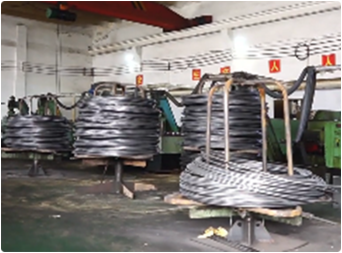Sep . 08, 2024 13:03 Back to list
large anchor bolts
Understanding Large Anchor Bolts Essential Components in Construction and Engineering
Large anchor bolts are critical components in construction and engineering, serving a fundamental role in securing structures to their foundations. These heavy-duty fasteners are designed to dissipate loads, manage stresses, and provide stability to various applications, from tall buildings and bridges to wind turbines and heavy machinery. Understanding their design, application, and installation is vital for engineers and construction professionals.
Design and Specifications
Large anchor bolts come in various sizes and specifications, typically categorized by diameter, length, and material composition. They are often made from high-strength steel, which provides the durability and resilience required to withstand significant loads. The diameter of these bolts can range from 1 inch to several inches, depending on the specific application and the forces expected to act on them. Generally, the larger the bolt, the greater its load-bearing capacity.
Design codes and standards, such as those from the American Institute of Steel Construction (AISC) and the American Concrete Institute (ACI), govern the specifications and manufacturing processes of anchor bolts. These standards ensure that the bolts can perform adequately under various environmental conditions, including seismic and wind loads.
Applications
Large anchor bolts are used in numerous applications across various industries. In civil engineering, they are essential for anchoring bridges, sign structures, and traffic signal poles to their foundations. In the renewable energy sector, they secure wind turbines to their bases, ensuring stability against high winds and changing weather conditions.
large anchor bolts

In the industrial realm, large anchor bolts are crucial for mounting heavy equipment, such as generators or compressors, to the ground or to their respective frames. This application is vital for safety and performance, as improper anchoring can lead to equipment failure or accidents.
Installation Process
The installation of large anchor bolts requires careful planning and execution. The process typically begins with drilling holes into the concrete or foundation where the anchor bolts will be placed. These holes must be accurately positioned to ensure proper alignment with the structure being supported. Once drilled, the bolts are often fixed in place using epoxy or grout, which helps achieve a strong bond between the bolt, concrete, and the surrounding environment.
It is essential to monitor and control several factors during installation, including the verticality and depth of the bolts. Additionally, torque specifications must be adhered to during tightening to avoid damage and ensure optimal performance.
Conclusion
In conclusion, large anchor bolts are indispensable elements in modern construction and engineering. Their design, applications, and proper installation are critical for ensuring structural integrity and safety. As engineering practices evolve, the importance of these robust fasteners remains a constant, highlighting the need for ongoing education and adherence to industry standards. Whether you are involved in infrastructure development or industrial projects, a thorough understanding of large anchor bolts will enhance both safety and performance.


